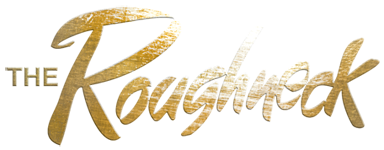By Curtis Serna
President, Storm Telematics
It should not come as any surprise to anyone living in North America today. There is a constant downward pricing pressure upon everyone within the value chain, which combined with increased costing, and having to do more with less, is placing significant strain on all stakeholders.
With mounting challenges comes opportunity to re-engineer the way you have managed your fleet, assets, and materials in the past, becoming more efficient and optimized.
There is immense opportunity to maximize your operational performance by leveraging tools and data to provide greater insight into the performance of your organization. To help solve the problems many organizations are facing today, there is a huge requirement to take a holistic view over everything related to your fleet, assets, and materials by leveraging and optimizing the data collected from the use of enabling technologies such as GPS, radio frequency tagging (RFID), and analytics.
The scientific aspect of measuring inefficiency begins with identifying areas of improvement within your organization by focusing on the proverbial low hanging fruit. Now that may sound easy to some and more difficult for others. Where to begin and where to look for efficiencies? It’s true that an organization cannot achieve optimal efficiency if employees do not know where they are inefficient. If your income statement doesn’t tell you where efficiencies can be had, it’s likely that your gut may be telling you that things may not be right within your organization and you may be spending too much on fuel, for instance.
Well there is a more scientific approach to optimizing your operations by first identifying those key performance indicators (KPI’s) that can be measured over time. Measuring your KPIs over time allows for a baseline to be established.
The following are some impactful KPIs that can have a life altering impact on your business:
- Operational KPIs:
- Measure inventory shrink;
- Measure fleet idling and fuel usage/waste; and
- Measure maintenance cycles.
- Insurance/risk KPIs:
- Measure radius/hub;
- Measure utilization; and
- Measure speeding compliance to corporate policies.
- Financial KPIs:
- Measure return on capital employed;
- Measure return on investment; and
- Measure cash conversion cycles.
- Marketing KPIs:
- Measure market growth rate;
- Measure cost/lead; and
- Measure relative market share.
- Customer KPIs:
- Measure profitability score;
- Measure lifetime value; and
- Measure satisfaction index.
- Employee KPIs:
- Measure revenue/employee;
- Measure employee satisfaction index; and
- Measure employee engagement level.
As one can imagine, operating a company in a dynamic environment is all about constant refinement and measuring areas of performance. It’s critical to create an environment where you simplify the transforming of complex data into action. The approach is to view your organization as an integrated system, and to obtain the granularity required to measure the true cost of inefficiency.
The art aspect of measuring the true cost of inefficiency comes into play by blending the data within your organization and creating visualizations and drill downs that lead to optimization. With optimization being a mathematical calculation, the creation of “efficiency algorithms” is then used to create these special visualizations.
Type of Analysis
Now we need to determine the type of analysis that will be the attention of the focus. Will it be on descriptive analytics, which focuses on the historical performance and the reasons behind past success or failure; diagnostic analytics focuses on determining the root cause of certain performance outcomes; predictive analytics turns data into actionable information by determining the probable future outcome of an event; or finally prescriptive analytics which synthesizes the data and then suggests decision options to take advantage of predications.
The above may sound like a daunting process to embark upon to reach true optimization, but remember that the sooner you begin, the closer you are to reducing waste and expenses. We highly recommend focusing on a specific area within your organization, which, for instance, could be logistics. Then focus on three areas that will have a dramatic impact on costs (i.e. fuel, speeding, odd hour usage of corporate assets). You can begin identifying and measuring fuel waste, low productivity or general wear & tear/ maintenance on your fleet. It isn’t until you have the measurements in-place and visualization that you can begin to utilize the information being measured.
The effort doesn’t stop there. To reach the plateau, you need to make everyone in the organization aware of the areas of inefficiency. This ultimately will result in a change in corporate culture. We understand your staff want to do a good job for your organization but they have no idea where they are being inefficient because their supervisors have no actionable intelligence as to where the rank and field are being inefficient. When you pull everyone into the “know” then everyone begins to row the boat in the same direction. People become more cognizant of their actions, especially when the data and the cost of inefficiency is shared through the organization, everyone then becomes more accountable.
Start your optimization journey today and before you know it, you’ll see a direct positive impact on your organization.
Author: Curtis Serna, president & founder of Storm Telematics. He is a tech entrepreneur who holds patents in telematics, and has achieved success by delivering value to his clients, including: the U.S. Department of Homeland Security, Transport Canada, Syncrude Canada, Canadian Natural Resources, Royal Dutch Shell, Saks Fifth Avenue, and Sobeys among others. Storm Telematics today deploys advanced fleet, asset, and material optimization solutions that incorporate analytic reporting and dashboard tools that are delivered through a team of mathematicians, statisticians and data visualization experts.
#Industry #KPI #inefficiancy #corporate #culture #analytics #customer #employee #marketing #financial #insurance #oprational #performance






